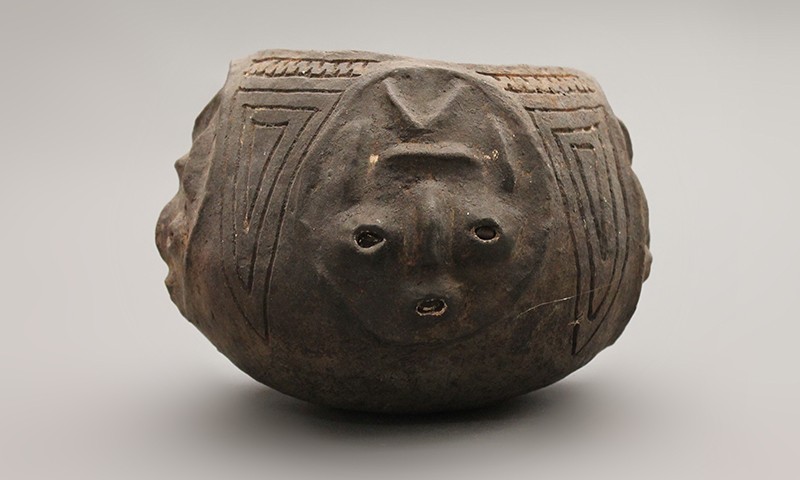 |
Ceremonial Vessel (Kwam), 19th to 20th Century
Abelam culture; Wambisa Village, Maprik District, East Sepik Province, Papua New Guinea, Melanesia
Clay, red, white and orange ochre; 3 ¼ x 9 3/8 x 7 3/8 in.
2018.7.16
Gift of Michael Hamson |
Vessel Variety
Perhaps above all else, Papua New Guinea is best-known for its variety. As many as 850 languages are spoken in its diverse island domain, constituting approximately 13% of the total estimated languages around the world. It should come as no shock that one finds just as much variety in New Guinea’s ceramic work. In this post we compare four pots from Michael Hamson's generous new donation of 27 Papuan vessels, looking closely at their makers, their usage and role in society, and the significance of their designs.
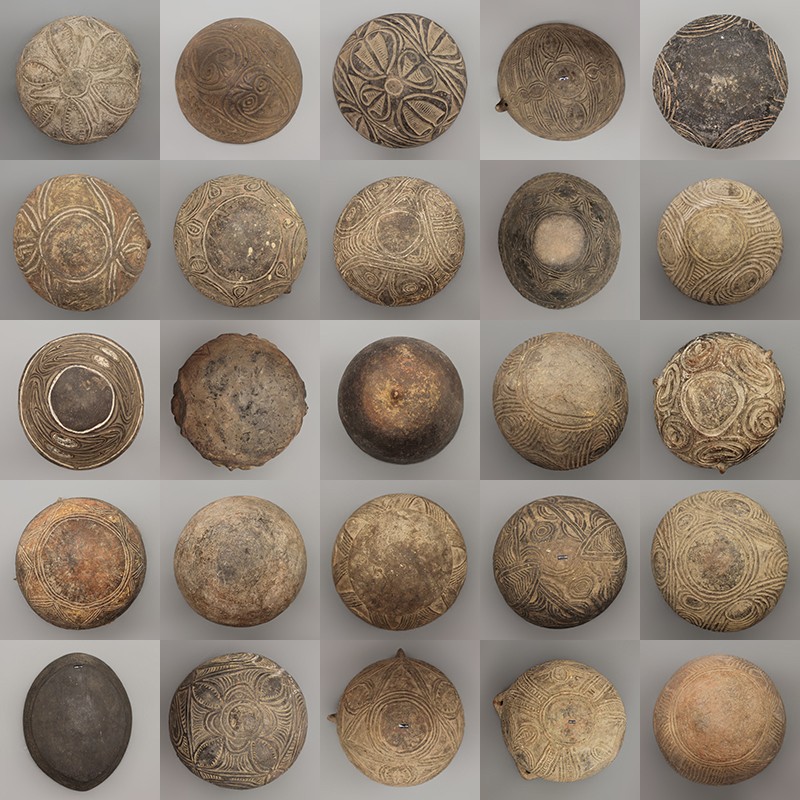 |
All but two of the vessels in the 2018.7 donation.
Gift of Michael Hamson |
Kwam, for Men
We begin with the Abelam people who live at the foot of the Prince Alexander Mountains in Papua New Guinea’s East Sepik Province. We have previously featured the Abelam in blog in posts about their yam diggers and yam masks. It may come as no surprise to our more voracious readers that this ceremonial vessel would have been used to consume yams—more specifically a white soup-like mixture made from coconut, taro, and yams. Referred to in the Abelam vernacular as a kwam, these ceremonial vessels were made by men for men, as the ceremonies it would have been used in took place in the secrecy of a village’s large, central men’s house, or haus tambaran. These pots were customarily painted and are characterized by designs of simplified faces that are arranged longitudinally around the vessel in a chain-like sequence. The designs were always carved roughly in a casual freehand style.

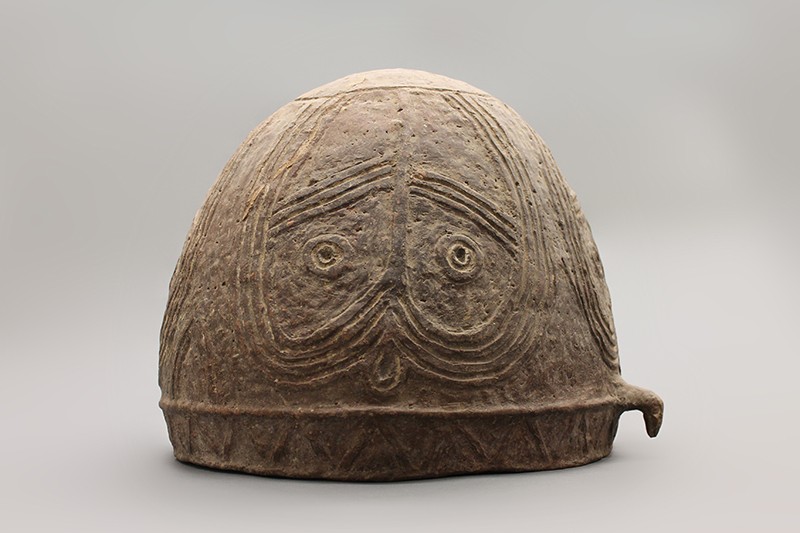 |
Eating Vessel (Khomongu), 19th to 20th Century
Yangoru Boiken culture; Yangoru village, East Sepik Province, Papua New Guinea, Melanesia
Clay; 12 ¼ x 14 ¾ x 15 ½ in.
2018.7.5
Gift of Michael Hamson |
Boikin Kiln
The Boiken were neighbors of the Abelam living just east of them along the Prince Alexander Mountains. As noted in our post on Boiken pottery masks, they were one of the few groups in New Guinea that made non-utilitarian art objects. Even though the khomongu bowls of the Boiken were utilitarian, we still see the same attention to artistry. The ornateness of design was often indicative of a khomongu’s role in society; the more elaborate the vessel, the more likely it would have been used for ritualistic activities. The majority of khomongu motifs originate from plant, animal, and anthropomorphic sources and are surrounded by geometric designs such as concentric circles. The faces on this vessel are masalai, bush spirits. Each patrilineal clan has its own malasai, and consequently, these clans have their own khomongu designs to represent their spirit’s face. Like the Abelam, the pottery vessels of the Boiken were created exclusively by men; but unlike the Abelam they could be used by both men and women.

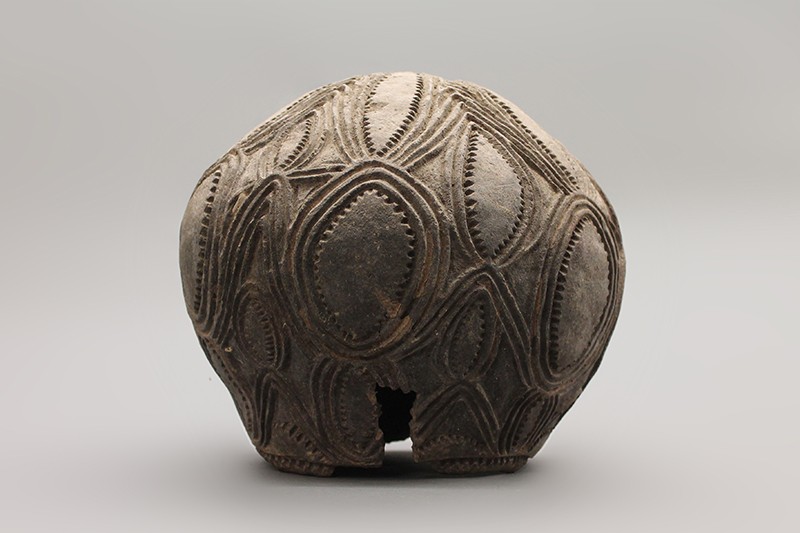 |
Cooking Pot (Kepa Tabeli), 19th to 20th Century
Buka culture; Yabinikor Village, Buka Island, North Bougainville District, Bougainville Province, Papua New Guinea, Melanesia
Clay and red ochre; 9 3/8 x 10 ¾ x 10 ¾ in.
2018.7.4
Gift of Michael Hamson |
Clay Cartel
Miles off the eastern coast of New Guinea, expertly crafted ceramic vessels were made by the potters of Buka Island. On Buka, the early 20th Century saw an exponential increase in the island’s pottery production. As ceramics became one of the main exports the Buka could offer for inter- and especially intraisland trade, individual villages would monopolize the clay used for pottery production. The name tabeli applies to all Buka pottery vessels—regardless of form or function—although most often is used when describing a cooking pot. Unlike either the distant Abelam or Boiken, all tabeli are crafted by female potters and are primarily used only by men. The rounded base form distinguishes this bowl as a kepa vessel in which men would prepare a ceremonial dish called menak.
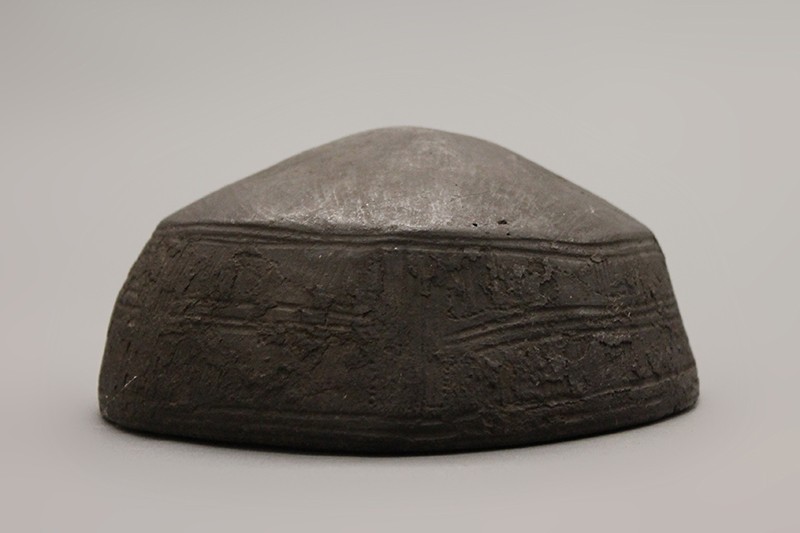 |
Cooking Pot (Vaegatoina), 19th to 20th Century
Amphlett culture; Amphlett Islands, Milne Bay Province, Papua New Guinea, Melanesia
Clay; 7 x 8 ¾ x 9 ¾ in.
2018.7.23
Gift of Michael Hamson |
Amplett Ancestry
The Amphlett Islands are the source of the most-traded and sought-after pottery in New Guinea’s Milne Bay Province. According to the legends of the Amphlett people, primordial ancestors of the Trobiand Islands emerged from a cave and brought clay and the art of pottery with them as they migrated and settled the islands east of New Guinea. The dissemination of pottery gradually evolved and became known a part of the region’s kula trade, a system of ceremonial exchange between the people of neighboring islands who depend on one another for indispensable goods and services. The creation of pottery on the Amphlett Islands is done by women. Men were responsible only for bringing the women clay and helping them distribute the pieces once they were finished. Amphlett pottery is characterized by its unique potting process and distinct form. Pots are crafted upside down and have an unmistakable lip, or rim, that surrounds the mouth of the vessel. Decoration of these pots consists of grooving and stippling designs across the lip and upper portion of the bowl. All pots made by the Amphlett people were ornately decorated in the same unique style, it was instead size that determined a vessel’s prestige. Based on its smaller stature, this pot would be classified as a vaegatoina, an everyday cooking pot.
Guest authored by Rachel Wilson, Intern for the Bowers Museum's Collections Department. Text and images may be under copyright. Please contact Collection Department for permission to use. References are available on request. Information subject to change upon further research.






Comments 6
So cool! And well written!
A stunning view of the beautiful peices and well written summaries as to their use!
This is so beautifully written and interesting. Such beautiful pieces.
Love to hear more about this! Fascinating insight.
Very well written and researched! And coconut, taro, and yam sounds delicious
need more of this!